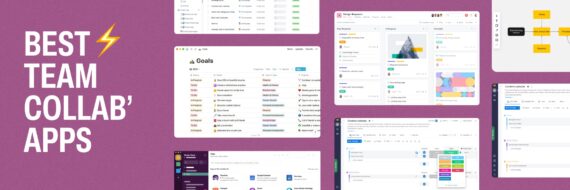As you approach a design project, you no doubt want to dive in and put your creativity to work. But before you identify a color palette, logo, and imagery, it’s best to start with a wireframe.
What is a wireframe?
Wireframing is a crucial step in developing UI, or user interface. Wireframes are a simple, often black-and-white display of how page elements will look on a screen. It drives the UI that will lead the design.
Most of the time, wireframes include elements such as:
- Main, secondary, tertiary, footer, and other site navigations
- Banners
- Blocks of copy
- Buttons and calls-to-action
- Image blocks or spaces
By establishing a wireframe, design teams can outline how they expect a website or app to appear on certain devices, laying the groundwork for the final product and UX, or user experience.
Put more simply, Dana Larson of Telepathy writes, “If we think of wireframing as a tool, it’s ultimate purpose is to create an ideal space for collaborative conversations about design solutions, while supporting iterations and driving rapid ideation.”
🎬 Learn what Slickplan can do!
We filmed a short video to show you exactly how to use Slickplan
Types of Wireframes
Wireframes come in many shapes and sizes. And there are many approaches in the UX industry for how to accomplish ideal wireframes. Most often, you’ll see them done in hand-drawn models, or in low-fidelity or high-fidelity models.
Hand-drawn or paper wireframes
Hand-drawn or paper wireframes can be a great place to start for any project. Sketching a wireframe by hand eliminates any digital clutter or distractions. More detailed questions, such as how a button will function, or what screen follows next, are easy to push aside while you focus on the major elements that the page needs.
Hand-drawn wireframes are also a helpful way to give and receive feedback, add notes, and user paths that can lead to valuable discussions among your team.
Some designers and UX practitioners go an extra step from the hand-drawn wireframe by cutting out each element — like body copy blocks and images — to lay them out on a table or floor. It’s a valuable way for teams to collaborate, as team members can physically “move” items around the wireframe to visualize the UI.

Digital wireframes
While hand-drawn wireframes are done the old fashioned way, with pencil and paper, digital wireframes are all done on a computer, often using a program. And digital wireframes, by and large, come in two formats:
- Low-fidelity (low-fi) wireframes, or wireframes that represent elements but aren’t clickable or actionable and;
- High-fidelity (high-fi) wireframes, or wireframes that represent actions and that are interactive and clickable to display the UX journey. High-fi wireframes might align closer to mock-ups than low-fi wireframes.
While both result in a wireframe that helps visualize design opportunities, they also both have different places in the process.
For example, a low-fi wireframe is ideal to plot where elements live on a page, and nothing more. On the other hand, high-fi wireframes can be valuable if one design is reliant on the next screen or step in the user journey. High-fi wireframes give you the ability to consider how conversions work within your app or website.
Learn more about wireframe approaches from Blink UX.

Wireframes for desktop, tablet, and mobile
As you study user experience in your redesign project, you should be thinking about the various devices your audiences are using, including desktops, tablets, and mobile devices like smartphones.
But know that there’s no right or wrong place to start: Designing the mobile wireframe makes you think about priority — what cards or elements will stack as users scroll the small screen. So, it might make sense to start small and work up, or larger. Then again, designing a desktop wireframe first might let you start with more space and make it easier to visualize how it might collapse or stack on smaller screens.
No matter which order you start in, it’s always recommended that you leave time to build wireframes for the screen sizes you expect users to find you on — so you and your team can accurately capture the intended UX across many platforms.
Tips for Building Great Wireframes
Whether you’re ready to dive into a hand-drawn wireframe with a team, or it’s time to take your wireframe digital, here are 15 helpful tips to keep nearby in order to create great, efficient wireframes.
Start with user research
Every project should start by asking: “Who is this for?” Who is the target audience? What challenges are they trying to solve? Where are they coming from to find you? No matter how you gather user data — from surveys and focus groups to online or social media polls — understanding who’s most likely to use your product and services will better prepare you and your team to visualize the obstacles and opportunities in advance. Record these users and their experiences as part of your user persona portfolio.
Solve for the user
Once you know who your user is, start thinking about their experience. Your wireframe and design shouldn’t just be a showcase of your creative skills. Instead, consider scenarios for your user personas: When they arrive at your website or app, what information is most valuable to them? What tasks are they trying to complete? By considering these types of questions first your team will keep focused on the user experience.
Make wireframes a collaborative process
Whether you’re a designer, a content strategist, or an accessibility expert, wireframes are an ideal place to collaborate. Each member of the team has a different point of view or expertise, and involving a bigger team can ensure these considerations are part of the end result.

Consider building agile
Agile methodology has been a staple in the software world for a number of years, but it’s expanding to find a place in teams around the globe. Agile is known for being “people-centric,” focusing on how teams organize around the deliverable rather than individual steps.
Make time throughout the process to share feedback with one another, and with the client, to make sure everyone’s on the right track. And if different members of your team are expected to bring the wireframe to the finish line, break tasks onto cards to stay transparent about what’s left to accomplish.
Maintain consistency
Be clear about what you’ll include, and what you won’t. Fonts (keep limited and generic), muted or black-and-white colors, spacing, and button or conversion shapes should be consistent across every version and wireframe you create. This keeps all team members (and client stakeholders) focused on the layout of the page, rather than idiosyncrasies of the wireframe.
Create a legend or index for sharing
Related to consistency, a legend or index of colors, fonts, spacing, shapes, and elements can help ensure everyone knows what-represents-what in the wireframe, whether digital or on paper. For example if colors are used minimally in the wireframe, identify when and why they’re used. If buttons take a specific shape, make note of it.
Set a deadline
In a perfect world, time wouldn’t be a factor and UX professionals and designers could spend weeks or months building a wireframe. Unfortunately, that’s not reality for most. Setting a deadline for your first iterations and final wireframe, is essential. Even more so if you’re working with a client, so they know when their approval is needed.
Avoid the weeds
It’s easy to start thinking two, three, or 12 steps ahead when building a wireframe. Afterall, it’s just one prototype for the rest of the experience, right? By staying focused on one screen at a time — and the essentials that screen needs to convey to the user — you’ll end up with a better experience as you connect the other pages or wireframes that lie ahead.
Use color sparingly…if at all
As mentioned above, color in wireframes is usually avoided. Because wireframes precede design, often no color is used because that isn’t pertinent to the page architecture. Keep it as clean and simple as possible. InVision’s team writes, “The proposed user journey should be clear without needing color or shading or fancy menus.”
However, using color for things like buttons, calls-to-action, or global navigation menus can be helpful for differentiating important elements. Just be sure to note the color and its purpose in your legend or index.

Use real copy and ditch the lorem ipsum
Lorem ipsum, also known as placeholder copy, has been around the web for ages. And while it can be helpful in early stages of content planning, it shouldn’t be part of the final wireframe deliverable or design concept.
By working with a content strategist or writer, you can deliver not only how the page should be structured, but what users will read when they get there. Plus, planning for the real content rather than using placeholders, ensures design elements align appropriately across devices and screens.
Iterate your versions
In true agile methodology, there should be no fear of failure. Every time you go back to adjust something in the wireframe – whether from feedback or from recognizing a potential obstacle to avoid – you should consider it a lesson. To keep those lessons fresh, iterate your versions and save copies of everything you do. This lets you and your team learn from where you’ve come and see how the wireframe has grown as you’ve learned more about the product, service, user, client, and beyond.
Get feedback from everyone
If you’re working in a silo, don’t be afraid to step outside of it and ask for feedback from colleagues or other user experience professionals. Even professional groups or Slack networks can give you an opportunity to think outside of the project in ways you maybe didn’t consider. It can be a valuable way to build bridges in your design and UX community, too.
Share the final wireframe with your client or stakeholder
It doesn’t matter if your client is “internal” at your organization, or a third-party client outside of your building. By sharing the final wireframe before design concepts begins, you’ll get real feedback which can assure that you’re going in the right direction, or provide different approaches that meets their unique needs.
Nick Babich at Adobe writes that wireframes can be seen as a communication tool, “Wireframes clearly communicate design decisions to stakeholders and teammates and, by looking at a wireframe, they should have a good idea of what screens an app or website will have.”
Test your wireframes
Just like user research being the first step in your wireframe process, users should be considered in the final steps before design concepts begin. By testing the wireframe and user journey, you’ll get insight into how real people will use the final result before any more time is dedicated to it. This assurance and learning opportunity lets your team continue iterating, if needed, and also provides valuable insight to your client or stakeholders.
Apply what you’ve learned going forward
Congratulations! Your wireframe is done. If you stuck with the homepage wireframe up until this point, it’s probably time to move on to others — including interior pages, tablet, or mobile versions. And if you’ve done them all, that’s great, too!
The most important thing is that you apply what you’ve learned about the user, the client, your stakeholders, and your team’s feedback to build a fantastic end product that meets the needs of your organization, or your client. And even still, taking similar approaches to other projects or tasks in the future can help you continue to build a collaborative environment that’s focused on success.
Think visually. Improve UX with Slickplan
Build intuitive user flows, stronger customer journeys and improve information architecture.
TL;DR – Keep it simple and Slickplan can help
When it comes to wireframes, the key is to keep it simple. The goal here is to identify the navigation, page elements, and flow of information that a visitor or user will see on their given screen. It’s not time for bells and whistles, so keep it simple.
When you’re ready to take your wireframes digital, or move into the mockup stage, let Slickplan give you a hand. Our Design Mockups tool has everything you need in one place, allowing you and your team to collaborate freely and deliver great concepts that meet your UX expectations.






 X
X

